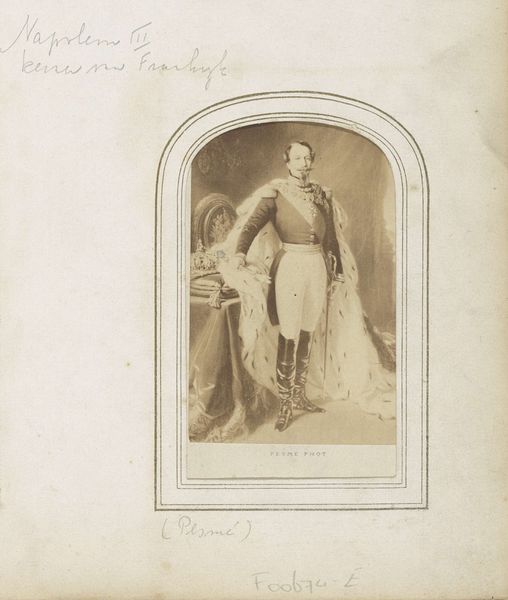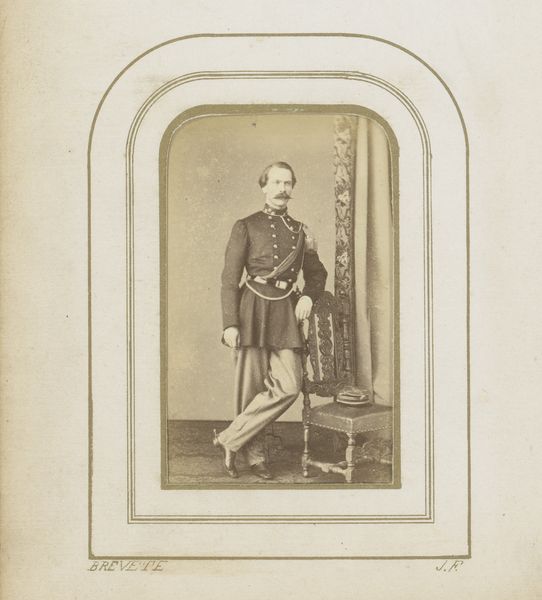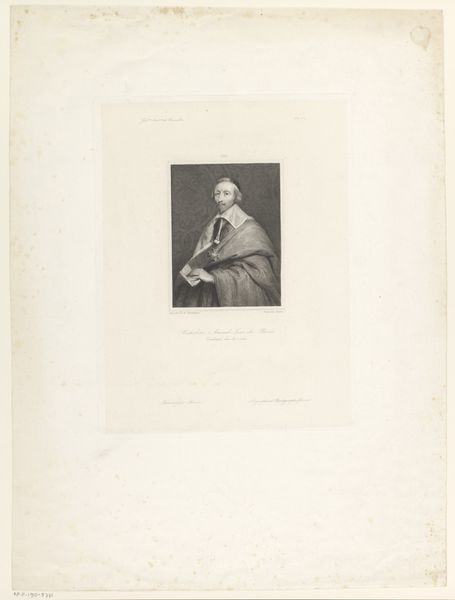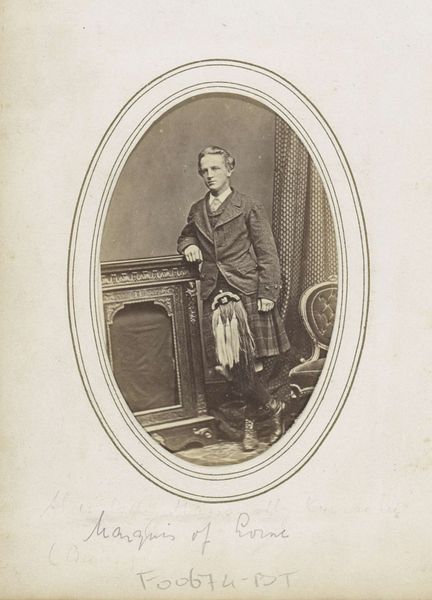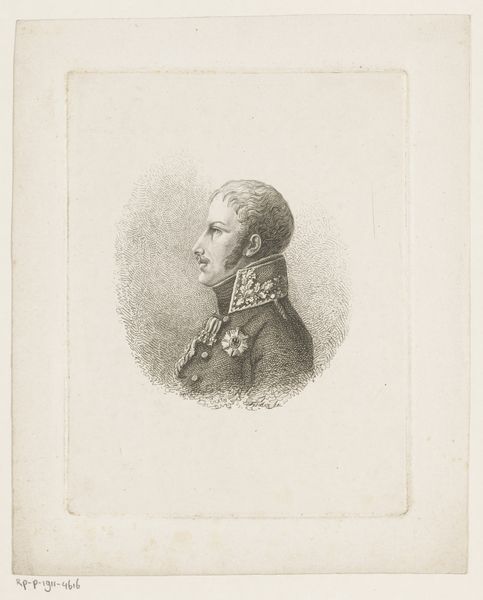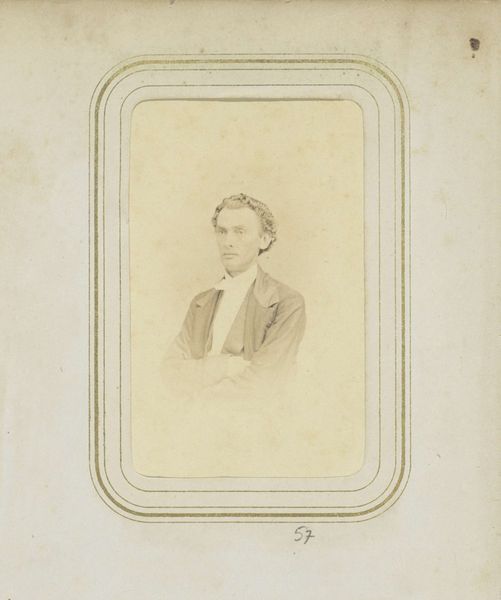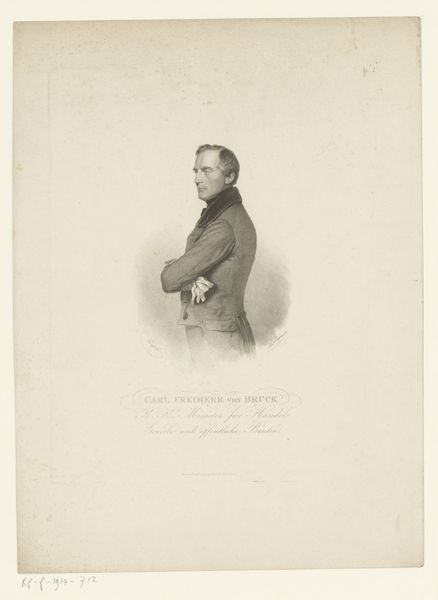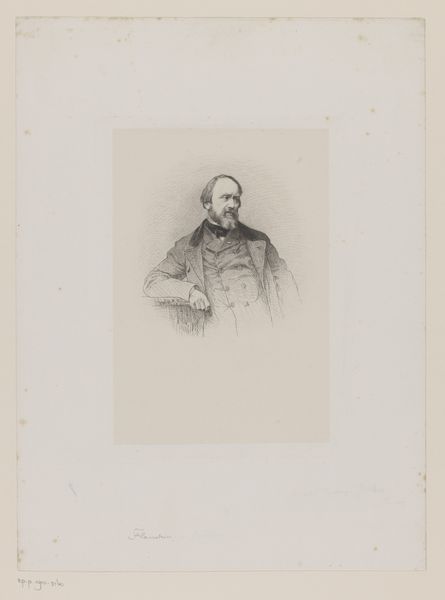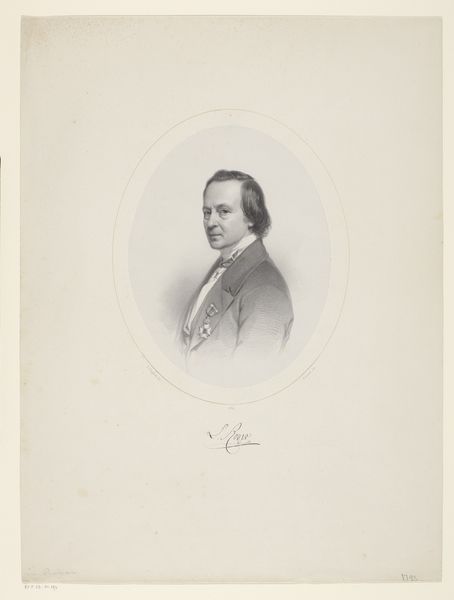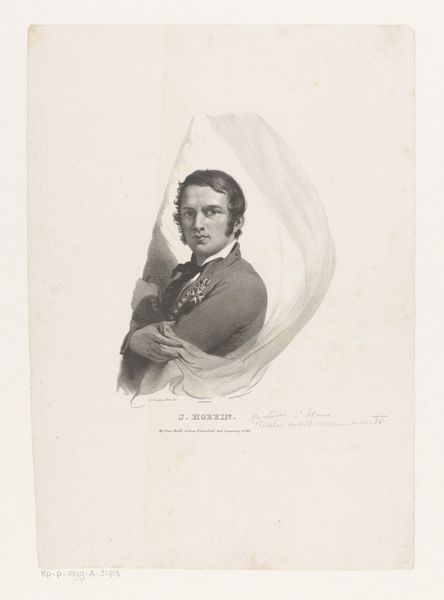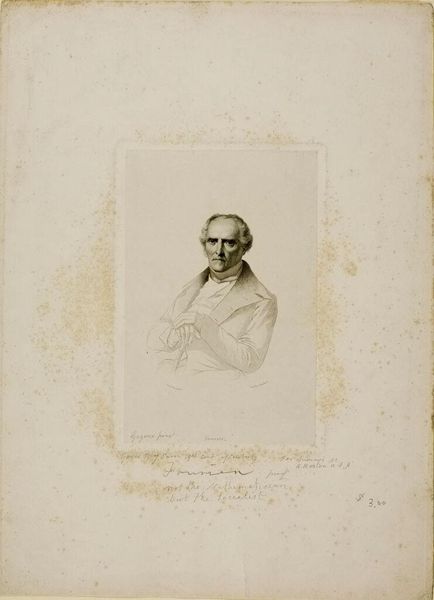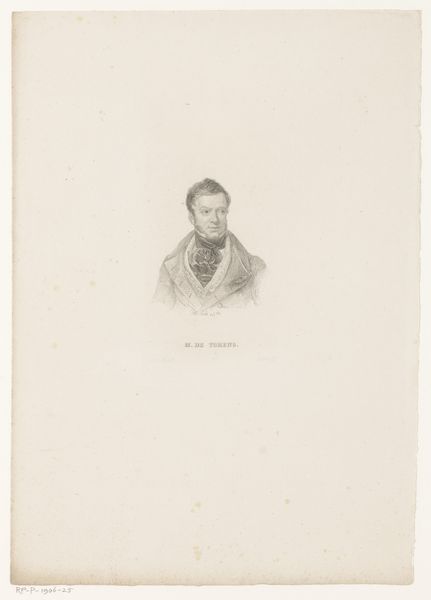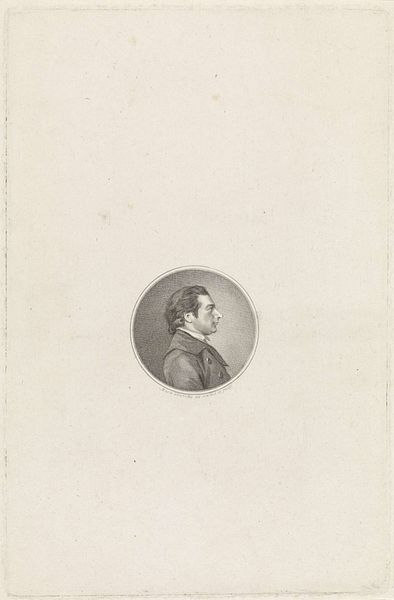
Fotoreproductie van een geschilderd portret van Napoleon III Bonaparte, keizer van Frankrijk 1855 - 1871
0:00
0:00
Dimensions: height 93 mm, width 56 mm, height 104 mm, width 62 mm
Copyright: Rijks Museum: Open Domain
Editor: This is a photographic reproduction of a painted portrait of Napoleon III, Emperor of France, by Dusacq & Cie, made sometime between 1855 and 1871. The man's regalia seems intended to express absolute power, a romantic portrayal to sway the populous. What's your take on it? Curator: I see it as a document of industrial ambition. Focus on the materials: a daguerreotype, a very early photographic process. Its creation involved specific chemical processes, skilled labor, and access to technology, indicating an interesting social landscape regarding artistic consumption and mass production during that era. Editor: Interesting, so you’re saying the *means* of creating the image is more significant than *who* it depicts? Curator: Precisely. The photograph flattens artistic hierarchy, elevating it from hand-crafted 'art' to reproducible commodity and reflects changes in production methods within art and media. Even the embellishments--the medal, the crown--are products of factories and skilled artisans of the period. The context of these materials gives greater meaning. Editor: I see what you mean! We're not just looking at Napoleon; we are examining an output of industry that in itself comments on broader social shifts. Curator: Indeed. How do the photographic techniques here shape our reception of royal representation? Also, think about the photographers themselves, the labour force in a studio... Editor: So we're considering them as manufacturers of propaganda. It shifts our focus. This photo’s a product with a function rather than purely a piece of artistic expression. Curator: Exactly. Now you’re seeing how materiality shapes interpretation, blurring that line between high art and social production. Editor: Thank you! I'll remember to look beyond the image to the conditions that made it.
Comments
No comments
Be the first to comment and join the conversation on the ultimate creative platform.
